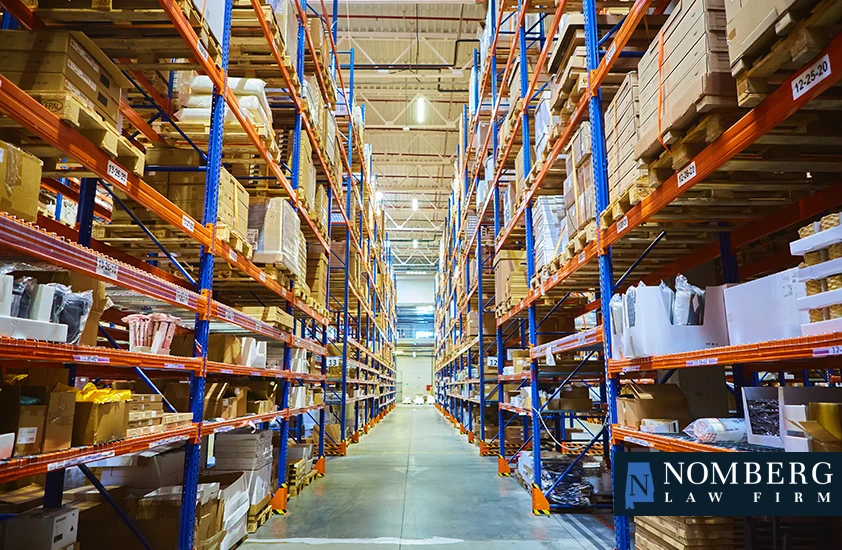Facing a crisis of lost opportunity and dangerous work environments, many companies have been looking for ways to improve their work efficiency and employee safety.
In recent years, wearable technology in the workplace has emerged as one of the key solutions to building a smarter workplace, increasing situational awareness, improving field visibility, and upgrading remote supervision.
Did you know?
According to a study conducted by the International Labor Organization in 2019, occupational and work-related accidents accounted for 373 million nonfatal workplace incidents globally per year, 2.73 million deaths per year, and $103 million in days of lost work.
As a result of these incidents, companies in the United States lost roughly $1 billion every week from injuries, according to the 2019 Liberty Mutual Workplace Safety Index.
What is wearable technology in the workplace?
Wearable technology may be the future of workplace safety for millions of Americans, and it could be coming to a busy warehouse or factory near you a lot sooner than you think.
Wearable technology in the workplace is best defined as any kind of electronic device designed to be worn on the user’s body to monitor, manage, and optimize workplace flow.
Its application is not restricted to one industry, but rather, has become a staple in various industries, such as construction, health care, retail, and more.
In what forms does wearable tech come to the workplace?
Wearable technology includes personal protective equipment, on-body connective devices, lift assistants, physiological monitoring systems, and more in the form of:
- Necklaces
- Watches
- Bracelets
- Chest or back-mounted devices
This technology offers a multifaceted approach to addressing common workplace safety issues, such as overexertion, slips, trips and falls, distractions, and unsafe working conditions.
How to avoid injuries while working in a warehouse
Learn our top tips for avoiding injuries while working in a warehouse.
What are the benefits of wearable technology at work?
Among its benefits, wearable technology helps enhance operational efficiency, heighten safety protocols, and facilitate smoother workflow coordination, ultimately leading to improved overall productivity and employee well-being.
These devices allow employers to monitor steps, temperatures, heat stress, fall detection, location tracking, and ECG readings. Employers can set custom alerts to help reduce accidents and keep employees aware of potential injuries. Additionally, employees can use the devices as panic buttons in cases of violent encounters.
As new technologies have continued to emerge, companies have expanded their utilization of wearable technology in the workplace. Through offering real-time monitoring of vital signs, movements, and environmental conditions, companies are currently better situated to assess the dangers and areas for improvement in their workplace than ever before.
What is the most popular wearable technology currently?
In recent years, many new and exciting wearable technologies have entered the market. Below are some of the most popular.
The KINETIC Reflex
One popular technology that has improved safety monitoring for heavy lifters in recent years is the KINETIC Reflex. The KINETIC Reflex is a tracking device that detects high-risk postures through motion sensors and analysis with real-time vibrational feedback. This device works to identify and assess potentially dangerous maneuvers and situations that can lead to injury in the workplace.
According to one study, after successful implementation, the KINETIC Reflex may reduce potentially unsafe postures by as much as 84%. Additionally, the study found that the application of this device resulted in a 50% to 60% reduction in injury frequency and a 72% reduction in lost workdays.
The Rufus WorkHero
In addition to technology that reduces risk for workers, such as the KINETIC Reflex, workplace technology, such as the Rufus WorkHero and the Humanyze Efficiency Badge, can provide data for companies to better manage the efficiency and safety of their employees.
The Rufus WorkHero offers a unified dashboard designed for analyzing productivity to streamline workflows, cut expenses, and minimize liabilities. This dashboard gathers and displays real-time data from various devices, including gloves, wrist cuffs, and wearable barcode scanners.
These monitors are used to track parameters such as pickup rates, activity levels, tasks completed, and labor costs. Utilization of the Rufus WorkHero has been proven to improve workers’ visibility to warehouse operations and reduce the pick speed and labor costs by up to 55%.
The Humanyze Efficiency Badge
In a similar manner to the WorkHero, the Humanyze Efficiency Badge is a wearable technology that can be worn to keep interaction data, track location, and provide engagement statistics of employees through sensors located on the badge.
These sensors collect data to estimate the levels of engagement, productivity, and adaptability, and provide a macro-view of the degree of collaboration within the organization to identify high-performing trends and areas for improvement. This technology offers valuable pieces of information to management that help increase the profitability and efficiency of their employees.
The Smart Helmet Clip
Recently, conglomerate Deloitte worked with a firm to create a Smart Helmet Clip that uses several modular sensors to give industrial operators and miners a readout to help with situational awareness and the presence of potentially dangerous gasses and also enables employers to monitor workers’ vital signs and locations.
This type of smart tech can transform workplaces by helping prevent injuries before they happen and keeping employees aware of their own health to ultimately improve efficiency.
Most common work injuries in Alabama
Learn about the most common work injuries in Alabama and which workers are eligible for workers’ comp benefits.
What is the forecast for wearable technology?
While the wearable technology industry is still somewhat young, it’s projected to grow exponentially over the coming years.
In 2019, the wearable technology industry was marked as a $3.8 billion industry, yet it projects to become an $8.4 billion industry by 2027.
This is due, in part, to the fact that 26% of respondents planned to set aside funds for wearable technologies, as reported by the 2021 MHI Annual Industry Report. Wearable technology in the workplace is also growing as it continues to provide competitive advantages in areas such as reduced lost work and less frequent on-the-job injuries.
These innovations and growth will be expansive, utilizing many areas and methods of growth. One area where workplace wearable technology projects massive growth is through the continued implementation of artificial intelligence.
Artificial intelligence programs will be able to better evaluate, assess, and take actions that aid in the prevention of worker injuries. By using artificial intelligence, companies may be able to successfully eliminate the middleman currently necessary to interpret and analyze worker data. AI will be able to better detect workers’ potentially unsafe movements and hazards in the work environment and provide real-time warnings that can reduce injuries and increase productivity.
Wearable technology in the workplace has been a major step forward for increased employee safety, health, and operational efficiency. By providing real-time monitoring and data analysis, wearable technology offers a proactive approach for management in preventing accidents and optimizing work processes. This industry will continue to grow in hopes of continued safety and increased efficiency.
The most dangerous and deadly jobs in Alabama
Learn which employees are at the highest risk of injury and how to get compensation after a workplace accident.
What are the challenges of wearable technology in the workplace?
The most common stumbling block for employers utilizing wearable tech is the cost. Not only do these devices come at a price, but the software to run on them and the additional employees required to monitor the software also have a cost.
In addition, wearables can sometimes prove distracting to the common worker if they’re loaded with features beyond just ensuring safety and tracking health. Much of the tech that’s available today can also be buggy and prone to malfunction and even pose a cyber security risk. Despite that, employers who have rolled out wearables in the workplace report that users get accustomed to the tech and find comfort in its use.
In the future, wearable tech should see the cost push down as more employers take steps to deploy them, with more and more safety features being utilized within the tech. Even now, e-textiles from Google and smart fabric manufacturer Loomia are integrating smart tech wearables into uniforms and dress shirts that can light up or vibrate to alert wearers to dangers in the workplace.
All this connectivity and data doesn’t amount to anything without a solid connection to people who can help in an emergency. There is a push to make communication between tech companies and 911 call centers easier, and that may be possible with the rollout of 5G. Companies like RapidSOS have already started to make critical data available to 911 operators and first responders.
Nomberg Law Firm helps Alabama workers who suffer on-the-job injuries
The advancements in wearable technology demonstrate significant potential for enhancing workplace safety, efficiency, and overall employee well-being. As these technologies continue to evolve and integrate into various industries, the potential for creating safer and more productive work environments increases.
However, it’s crucial to acknowledge that technology alone cannot solve all workplace safety issues. There must be a commitment from employers and employees alike to foster a culture of safety and well-being.
At Nomberg Law Firm, we firmly believe that every employee is entitled to a safe and secure work environment. Recognizing the importance of these developments, we encourage anyone who suffers a workplace injury to reach out to us.
Our knowledgeable Birmingham workers’ compensation attorneys are dedicated to providing the support and legal assistance you need to get the compensation you deserve.
Contact our office today to schedule a free consultation to learn how we can help with your workers’ comp claim.
References
Improving workers’ compensation loss experience using wearable technology. https://www.milliman.com/en/insight/improving-workers-compensation-loss-experience-using-wearable-technology
New Uses for Wearable Devices in the Workplace. https://www.shrm.org/topics-tools/news/technology/new-uses-wearable-devices-workplace
Safety and Health at the Future of Work: Building on 100 years of experience, International Labor Organization, 2019. https://www.ilo.org/
Trends in Workplace Wearable Technologies and Connected-Worker Solutions for Next-Generation Occupational Safety, Health, and Productivity. https://onlinelibrary.wiley.com/doi/full/10.1002/aisy.202100099
Workplace Safety Index Reveals Workplace Injuries Cost U.S. Companies Over $1 Billion Per Week. Liberty Mutual, 2019. https://www.libertymutualgroup.com/about-lm/news/documents/2019-workplace-safety-index.pdf



